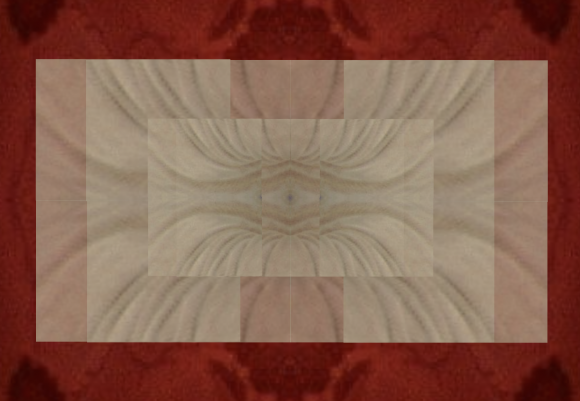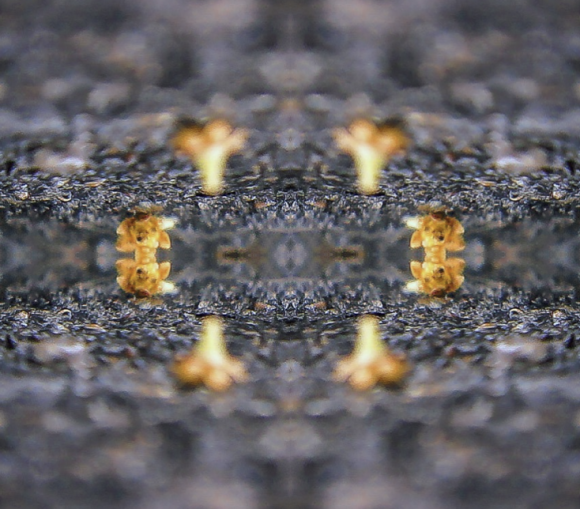Two different senses of ‘synchronistic phenomena’ are operative in Jung’s work. In a narrow sense, there are what I call ‘synchronicities’ on this blog: occasions where two or more events coincide although there is a low probability for them to do so, and where at the same time there is a pronounced sense of a ‘meaningful connection’ between them. That sense of meaning is often perceived only by an individual (for other involved people, the whole thing can be ‘just a coincidence’).
In a wider, i.e. more general sense, Jung wants “to subsume all cases of something being thus-and-so which is causally not intelligible under the notion of synchronicity” [“alle Fälle, bei denen es sich im ein kausal nicht denkbares So-Sein handelt, unter den Begriff der Synchronizität zu subsumieren”] (PJB 63). Primarily, he has the Rhine experiments (ESP and psychokinesis) as well as his own statistical experimentation with astrology (GW VIII, §§ 866-904) in mind, and then he claims more sweeping generalizations still: to “all divinatory, i.e. intuitive techniques” which he says are “based on acausal or Synchronicity connections“ (GW VIII, §866, his emphasis; see also §976 in the same volume).

1. Already from this rough sketch of Jung’s wider sense of ‘synchronicity’ it is rather evident what he took the defining characteristic to be: whatever is somehow ‘acausal’ would fall under that notion.
Now whether something is “acausal”, or “causally not intelligible” is certainly not something we can observe: it is not a feature of how the phenomenon appears to us, we do not arrive by it by doing phenomenology. To say that something is “causally not intelligible” is to say something about our theories, about their power and their scope.
I have said in a previous post that Jung, when he delimits and describes instances of the phenomenon he investigates, does not always clearly distinguish between doing phenomenonology and his own theoretical assumptions (or objectives) — and this, of course, is what I had in mind. Jung starts with a phenomenon we can observe and describe phenomenologically, but then he proceeds to generalize and include a lot more under it than we might encounter in our own experience, based on theoretical ideas which he later wants to derive partly on the grounds that they explain his phenomenon.
2. Let us pause here to point out that this makes his explanations circular. Jung wants the phenomenon of synchronicities to be defined as “whatever cannot be explained causally” and then go on to claim that the principles of of science, particularly causality, cannot explain these phenomena and must therefore be expanded by his own proposed principle of synchronicity.
That is problematic. To see why, consider an analogy. Suppose I told you that I have discovered a group of phenomena which I call, say, “interesting” phenomena. Were you to ask me what I mean by that, I might give you a seemingly arbitrary, colorful list of all kinds of things: rainbows, brain surgery, detective novels, bird migration, and so on. I then go on and claim that current science is unable to explain why “interesting” phenomena are “interesting”, and has to be supplemented by a “principle of interestingness”. Were you to ask me why, I would point out that there is no other way to explain “interesting” phenomena.
A similar circularity appears in Jung’s reasoning because of a conjunction of factors: first, his ‘principle of synchronicity’ is not a substantive notion at all. It is mostly a placeholder for something that would have to be worked out (as he says himself at GW VIII, §985), and it is defined merely negatively, i.e. by what it is not: as a principle of ‘a-causal connections’. Secondly, the phenomenon — in the wider sense — which the principle is supposed to explain is also defined negatively: as “causally not intelligible” occurrences. There may be substantial empirical aspects about the phenomenon in the narrow sense, of course, which would need explanation. But after Jung’s generalization move, these substantial aspects are abstracted away (i.e.: ignored) in favor of the wider notion, where there is precisely only the negative criterion (“not causally intelligible”) left.
Thus in the end it all boils down to saying that “causally inexplicable” occurrences cannot be explained using the principle of causality, but must be explained by another principle, of which we only know that it is “a-causal”. That sounds (trivially) true, but also supremely unhelpful.
3. The wider sense of the ‘synchronistic phenomenon’ is inextricably bound up with the ‘revolutionary’ story in Jung’s essay. The whole reason to include the Rhinean notions of ESP and psychokinesis in the discussion is their purported status as experimentally proven; and Jung’s entire discussion of his own astrological ‘experiment’ seems to point in the same direction. The discussion of ESP et. al “experiments” contributes at no point to an understanding of synchronistic phenomena in the narrow sense; they are only there because of their role in Jung’s argument about how insufficient — in his view — the principle of causality is, and how it should be supplemented with an additional ‘synchronistic’ principle.
It is worth noting that the generalization move from the narrow to the wider sense has been repeatedly challenged by Pauli in his letters to Jung. Already in 1948 (over 2 years before the synchronicities essay was published) he says that “personally I can relate much stronger to occurrences where an external event coincides with a dream than to the behavior of statistical series in experiments. While I have personal experience with the former, my intuition lets me down about the latter.” (PJB 41) This is quite in line with what Jung will say later in the preface to the essay (and, incidentally, with my own experience of synchronicities, too). Many people have personal experience with synchronicities (in the narrow sense). That’s precisely why there is a phenomenon to be explained here. The Rhine experiments (and Jung’s astrological series), on the other hand, are not representative for any real experience anyone has. Even if they really were, as Jung thought, scientifically valid results (which I think they are not), they would not be included in the discussion as an experienced phenomenon, i.e. for their phenomenology, but rather for the theoretical reason that they are “acausal” (GW VIII, §§846, 861-863).
Moreover, Pauli also points out that “Rhine’s experimental series seem to be phenomena of a different kind than the other ‘synchronistic’ phenomena you talk about. With the former, I cannot see any archetypal grounding, […] nor that their occurrence would be complementary to an archetypal content becoming conscious. […] For by this the occurrence of a synchronistic event would be bound to a specific state of consciousness.” (PJB 40; his emphasis)
It is precisely this connection between Jung’s archetypal psychology and synchronistic events that is lost once we move from the narrow sense to the more general sense. It would seem, then, that this generalization move cannot be motivated by a psychological observation, something in the phenomenology of synchronicities in the narrow sense.
4. Pauli returns to that point once more in a later letter. He reiterates that the wider sense of synchronicity might “lose too much of what is specific for the psychic or half-psychic portion of synchronicity” — that is, the wider sense drops too much of what would be helpful for understanding the phenomenon in what I have called the narrow sense (PJB 66). In particular, he says that the “psychic or psychoid notion of an archetype cannot be applied without coercion to the acausalities in microphysics” (i.e.: quantum phenomena; PJB 66). Although he eventually goes along with Jung in using the wider sense — because, as he says, he is interested in the “psychology of concept formation in the sciences”, and because he trusts Jung’s intuition there (PJB 67) —, he again admonishes that this means the notion of archetypes then requires a lot of work. In other words, Pauli here re-states the need for what I have called the ‘exploratory’ project.
Basically there are two options in play: one would be to stick with the narrow sense of synchronicities, and work out their connections with the notion of a psychoid archetype (PJB 66); the other would be to go with the wider sense, but then that notion is not remotely sufficient, and needs to be reworked and much generalized (PJB 67).
5. Now in his essay, Jung proceeds by using the wider sense, i.e. picking the second option. Consequently, he incessantly intertwines his discussion of the phenomenon in the narrow sense — i.e., of individual episodes — with the Rhine experiments, and he keeps pointing out the “a-causal” characteristic in each case as the primary feature.
We may note in passing that this does not help making his views more intelligible. It would certainly have been better had he first demonstrated how his notion of synchronicity explains the narrow phenomenon, without the distractions from all those broader topics, and only then moved on with his arguments for the generalization. Again, his reason for not doing so seems not to be a genuine drive for explanation, but rather the primacy that Jung sees in his notion of the “a-causal” and in the supposedly higher standing of what he takes to be experimentally proven (for this, see again GW VIII, §§861-863). Once again, we see the ‘revolutionary’ story dominating the structure of the argument.
6. Finally, a very unpleasant detail needs to be addressed here. Given that Jung’s wider sense of the notion of the ‘synchronistic phenomenon’ is thus based on his theoretical assumptions and objectives, and not on cautious phenomenology, what do we make of Jung’s repeated claims to the contrary?
For instance, he says in a lecture that “synchronicity is a modern differentiation of the obsolete notion of correspondence, sympathy and harmony. It is founded not on philosophical assumptions, but on experience and experiment.” (GW VIII, § 985 my emphasis.) Similarly in the synchronicities essay he writes that “Synchronicity is not a philosophical view but an empirical notion, which formulates a necessary principle for knowledge.” (GW VIII, §950.)
But this is clearly wrong: “necessary priniciples of knowledge” are virtually by definition not empirical notions, they are complementary with them; and moreover, to claim that his theorizing is “not metaphysics” (and, somewhat inconsequentially, “not materialism”, too; GW VIII, §950) is strangely off the mark as well.
It is hard to imagine that Jung was so unaware of the philosophical distinctions to be made here: among others the distinction between empirical and theoretical elements of one’s view, and the distinction between empirical inquiry and metaphysical formulation of first principles (such as causality and, if it were to be established, a principle of synchronicity, too). Given such considerations, and given also the uncomfortably rhetorical and ad hominem character of these passages (“no serious scientist will claim that …”; GW VIII, §950), I find it difficult to see how these claims could have been made in good faith.
7. To summarize: I have criticized Jung’s wider, more general sense of the phenomenon of synchronicities primarily because it generates a circularity with the formulation of a principle of synchronicity, which is the main proposal in the ‘revolutionary story’. This criticism tallies with other reasons to abolish that proposal. It also reflects badly on the generalization move itself. If the sole purpose of that move would be to support the ‘revolutionary story’, we should abandon the wider sense together with all the rest of it.
More importantly, the generalization makes it also more difficult to focus on the phenomenon in the narrow sense, where we might make some progress towards real explanation (I have dubbed this the ‘exploratory project’). It abstracts and/or distracts from precisely those features of synchronicities (in the narrow sense) which might help us to connect them with the psychodynamics between consciousness and the unconsciousness, or the numinous character of perceiving archetypal patterns in a subject’s life. These are originary Jungian notions, but we lose sight of them once we follow Jung’s questionable generalization move.




[…] we have seen that Jung has a rather wide notion of synchronistic phenomena. What he has in mind here seems to be primarily ‘telepathy’. He quickly dismisses any […]